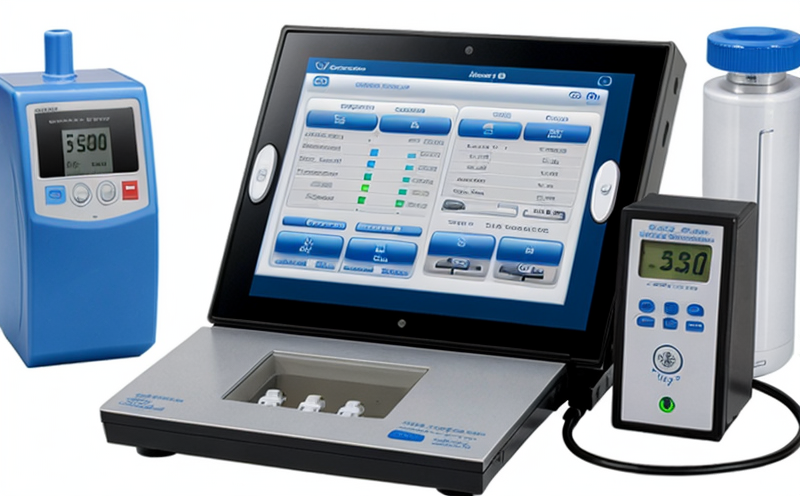Flow Resistance Testing in Infusion Tubing
In the medical device sector, ensuring the safe and effective operation of infusion pumps and drug delivery systems is paramount. Flow resistance testing plays a critical role in this process by evaluating how fluids move through the tubing used in these systems. This test assesses the pressure drop across the tubing as fluid flows through it at specified rates and pressures.
The primary purpose of flow resistance testing is to ensure that the infusion tubing does not impede the flow of medication or other fluids to an unacceptable degree. Excessive flow resistance can lead to inaccurate dosing, which may result in undermedication or overdosage, both of which are serious risks for patients. By conducting this test, manufacturers and quality assurance teams can validate that their devices meet regulatory standards and perform within acceptable operational limits.
The testing process involves the use of specialized equipment designed to simulate real-world conditions. Typically, a constant flow rate is maintained through the tubing while pressure measurements are taken at various points along its length. These pressures are then compared against expected values derived from established industry standards such as ISO 15856-2 and ASTM F2047.
Proper specimen preparation is crucial for accurate results. This includes ensuring that the tubing is free from contaminants, properly sterilized if required, and pre-conditioned to simulate in-use conditions. The flow rate and pressure should also be carefully controlled during testing to avoid any deviations from the specified parameters.
The apparatus used for this test can vary depending on the complexity of the system being evaluated but generally includes a fluid delivery device capable of maintaining precise flow rates, a manometer or other pressure measurement tool, and a method for connecting the tubing sample to the system. The results are typically reported as a resistance coefficient (R), which quantifies the relationship between the applied pressure difference across the tube and the resulting volumetric flow rate.
Understanding the implications of improper flow resistance is essential for healthcare providers and patients alike. For instance, if an infusion pump has tubing with high flow resistance, it might deliver medication at a slower than intended rate, potentially leading to treatment delays or failures. On the other hand, excessively low flow resistance could indicate poor design or manufacturing quality, which increases the risk of leaks and potential contamination.
In summary, flow resistance testing is an integral part of the development and quality assurance process for infusion pumps and drug delivery systems. It ensures that these devices function safely and effectively under all expected conditions, thereby protecting patient health and safety.
- Ensures accurate medication dosing
- Meets regulatory requirements (ISO 15856-2, ASTM F2047)
- Avoids potential contamination risks
- Guarantees proper operation under real-world conditions
Why Choose This Test
Selecting flow resistance testing for infusion tubing is crucial for several reasons:
- Achieves regulatory compliance: Adhering to industry standards ensures that your product meets all necessary requirements, avoiding potential legal and financial penalties.
- Increases patient safety: By ensuring accurate medication delivery, you minimize the risks associated with underdosing or overdosing.
- Enhances device reliability: Proper flow resistance testing helps identify any issues early in the development process, leading to more robust and dependable products.
- Saves costs in the long run: Early detection of problems through rigorous testing can prevent costly rework or recalls later on.
The benefits extend beyond just compliance; they contribute to a safer healthcare environment where patients receive the right amount of medication at the right time. This not only enhances patient care but also builds trust between medical professionals and manufacturers.
Quality and Reliability Assurance
Flow resistance testing is an essential component in maintaining high standards of quality and reliability within the manufacturing process of infusion pumps and drug delivery systems. By incorporating this test into your quality assurance protocols, you can ensure that each product meets or exceeds established industry benchmarks.
The rigorous nature of flow resistance testing helps identify potential flaws early on, allowing for timely corrections before mass production begins. This proactive approach ensures consistent performance across all units produced, enhancing overall confidence in the reliability and safety of these critical medical devices.
Moreover, regular flow resistance testing contributes to long-term brand reputation by consistently delivering products that meet stringent quality standards. Patients trust brands that demonstrate a commitment to excellence through thorough testing procedures like this one.
Environmental and Sustainability Contributions
Incorporating flow resistance testing into your medical device manufacturing process also has positive environmental implications. By ensuring accurate medication dosing, you reduce the likelihood of wastage due to undermedication or overdosage. This efficiency translates directly into reduced resource consumption and lower waste generation.
Furthermore, by maintaining high levels of quality assurance through comprehensive testing like flow resistance testing, you contribute to a more sustainable healthcare system. Your commitment to these practices not only enhances patient safety but also sets an example for others in the industry to follow suit.





